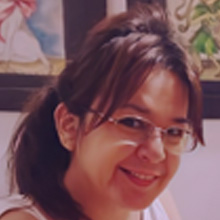Stella Peralta es colombiana, pero no es la razón por la que nos acompaña hoy. Así que debo comenzar mejor: Stella Peralta es caricaturista, dibujante, ilustradora, pintora, ha ganado premios internacionales con su excelente obra. Razones de sobra para estar en este sitio dedicado al humor. Entonces, una vez mencionado esos importantes datos suyos, le doy la bienvenida a Humor Sapiens a esta gran artista.
PP: Stella, es un honor y un placer tener este vis a vis contigo. Pero tengo la impresión que estuve muy mezquino con mi presentación. Por tal motivo te pido, por favor, que te presentes tú misma, para que los seguidores de humorsapiens.com que no te conozcan, se den una idea de tu vida y obra.
STELLA: Gracias, Pepe, por tener en cuanta mi trabajo y obra. Bien, anexando a todo lo anterior que dices sobre mi trayectoria quiero comentar que mi título profesional es Diseñadora de Modas, el cual ejercí por más de treinta años. Soy casada y tenemos dos hijos, uno de veinticinco años y el menor de dieciocho años. He sido docente de figurín, expresión artística y en los últimos años he trabajado en la parte de capacitación y educación para niños, adolescentes y jóvenes, impartiendo talleres de caricatura, ilustración manga, creación de personajes en cooperativas, Cajas de compensación familiar y escuelas de diseño y animación en mi ciudad Tuluá en el Valle del Cauca.
PP: Larga trayectoria y rica, porque lo es ser formadora de nuevos talentos. Pero ahora sí nos metemos de lleno en nuestro diálogo… Cuando comienzas en esta carrera es normal que lo hagas con muchas influencias, con poca práctica, incluso experimentando con cierta improvisación, etc. Pero ya a estas alturas de tu carrera, tan sólida, es distinto, ha evolucionado tu obra en cuanto a calidad, sin dudas. Sin embargo, mi pregunta es: ¿te has dado cuenta de que has evolucionado también en forma y contenidos?
STELLA: Definitivamente, si lo he notado en mi practica diaria, tanto en el ejercicio del boceto, concepción de la idea y obviamente en mis procesos mentales e intelectuales. En los últimos años creo lo he repetido mucho en conversaciones, entrevistas y escritos propios, que ésta era digital nos ha regalado un bonus de facilidad a todo nivel para generar conceptos, obras, técnica y oportunidades.
PP: Sin dudas, hay una mayor gama de posibilidades con la tecnología, aunque dicen que por otra parte nos embrutece. Me alegro que en ti funcione bien. Ahora, de todas las modalidades que dominas (caricatura, ilustración, etc.), ¿cual es tu preferida? Por favor, no me digas que todas. Pero si es así, piensa en profundidad cuál es la que, aunque sea un poquito, te satisface más.
STELLA: Mi preferida es la caricatura fisonómica, me da la oportunidad de esculcar en lo profundo y en lo efímero del gesto, del ser, del entorno y así amalgamo mi trazo.
PP: Muy bien argumentado. Para mí ser bueno en esa modalidad es algo grandioso por lo difícil que es practicarla con alta calidad… Stella, yo te conocí a través de tus caricaturas personales, que me encantan. Sobre ellas entonces: ¿cómo escoges a tus caricaturizados? Y después, ¿cuál es el proceso y/o método que practicas para captar su alma, más que su físico?
STELLA: Pepe, ésta respuesta claro que va ligada a la anterior y déjame decirte que los personajes los escojo generalmente desde mi inquietud intelectual, social, artística. Son esos personajes que han dejado huella profundamente positiva o impactante en la sociedad (ya se les han quebrado las patas de barro a algunos de ellos). No tengo un orden estipulado para crear el personaje, a veces comienzo con la parte física (buscando referencias visuales) y otras ocasiones primero indago sobre su vida y obra. No hago muchos bocetos para llegar al definitivo, pues antes ya lo he moldeado en mi mente. Me fijo mucho en su mirada (externa e interna). Y aunque me gustaría hacerlos a todos sonriendo (porque me encanta que la gente sonría) algunos personajes son muy serios, aunque a un par de ellos les inventé la sonrisa, salieron bien.
PP: Me imagino. ¿Pero quizás el personaje es tan hiperserio que es mejor mostrarlo sin sonrisa, ¿no es cierto? Supongo que lo haces así, por supuesto. Y eso de valorar tanto la sonrisa como para hacer reír a tu modelo, me parece genial. Voy a abordar un poco ahora la teoría (me fascina, debes saberlo). ¿Consideras que la caricatura personal está dentro de lo que se conoce como humor gráfico? Te lo pregunto porque sé de colegas que dicen que hay cierta variante de caricatura personal que no está hecha para sacar sonrisas y ponen de ejemplo algunas que casi son retratos “lúdicos”, por llamarlos así, que tienen como objetivo homenajear al caricaturizado. Y la califican de caricatura, porque, aunque sea un retrato (sin exageraciones), le colocan el cuerpo muy pequeño, por ejemplo. Sin embargo, hay otros colegas que dicen que toda caricatura es una parodia de un modelo (una persona en este caso) y eso implica la intención de producir sonrisas. ¿Cómo lo ves tú?
STELLA: Pues que todos tienen razón. Como también tengo mi propia versión del tema. Humor gráfico es todo aquello que conlleva una intención de sonrisa, de mensaje, de mover conciencia, e incluso de mover masas en pro o en contra de… Mas para mí la caricatura personal o caricatura fisonómica es y debería de ser una pieza de arte que tiene un lenguaje distinto de solaz, de impacto visual y cultural, intelectual que deberíamos de aprovechar. Llevo varios años exponiendo mis caricaturas en medio del arte convencional y bueno se han visto comentarios de toda índole, en su mayoría positivos. Es cuestión cultural el que no se vea estéticamente aceptable en estos espacios de museos o galerías, por considerarla un arte menor. Pepe, pero es mi percepción desde hace muchos años y no sé si me equivoco, que el reciente fallecido pintor Fernando Botero, nos adelantó algo sobre lo antes mencionado.
PP: No sé qué decirte, querida. Yo soy de los que piensan que dibujar a una persona en forma de caricatura, se hace con el objetivo de hacer reír o sonreír, como parodia que es. Otra cosa es que esa sonrisa la tenga hasta “la víctima”, porque se note que la caricatura no es para burlarse, criticar, satirizar, sino es un simple juego. Y de que es un arte menor, imposible de creer. Incluso los que creemos que la caricatura personal está dentro del universo del humor, pensamos que es una modalidad de las artes visuales como cualquier otra, sea pintura, escultura, grabado, etc. Pero aún nadie tiene la verdad absoluta y como dices, quizás todos tengamos razón. Lo importante es que sigamos teorizando, ¿no es cierto? Y para teorizar más: ¿qué es para ti el humor?
STELLA: Para mí es contenido fino de pensamiento jocoso, esa delgada línea que hay entre lo gracioso y lo altamente culto o cultural, Allí entra también los juegos de palabras maravillosas que crean formas tremendamente creativas. Lo demás para mí son “chistes” “charadas” “chascarrillos”.
PP: Muy bien. Pero de nuevo pienso algo diferente. Para mí un chiste es humor, una caída de un payaso es humor, un juego de palabras y una caricatura también es humor, etc., etc., porque la cualidad de humor no lo da la calidad de ese humor. Mi definición de humor es “la expresión de lo cómico”. Y si nos hace reír nada más, magnífico y si además nos hace reír y pensar a la vez, magnífico también. En fin, podemos estar horas analizando el tema, por eso me parece importantísimo teorizar. No hay nada definido todavía en este campo y por ello todos tenemos razón en lo que pensemos, ¿no es así? Bueno y para continuar en esto, ¿cuál es tu definición de humor gráfico?
STELLA: Pepe, creo que me adelanté en una de las preguntas anteriores, igual trataré de complementarlo. Sin duda antes que sonrisa, es conciencia, es libertad de expresión, es opinión, el humor gráfico es tan importante en la sociedad como ingrediente cultural y educativo, no solo en la escuela y academia sino desde el hogar. Son esas pequeñas piezas gráficas que mueven historia, que descolocan mentes y generan cambios sociales, como dije anteriormente sea a favor o en contra de…Es como el catalizador de las “metidas de pata” de la historia y quienes la hacemos.
PP: Estoy de acuerdo. Pero solo con un matiz a profundizar más. En todo eso que dices de la importancia del humor gráfico, estoy completamente de acuerdo. Sin embargo, no diría “antes que sonrisa es… Porque para mí es sonrisa siempre y no se puede desligar la sonrisa de ese valor que le damos al humor gráfico. Es más, pienso que si no hubiera sonrisa, el mensaje que decimos tú y yo, que produce el humor gráfico, no sería efectivo. El humor es más efectivo que la seriedad en los mensajes. Llega más, cala más, cambia más. Pero me encanta que debatamos todo esto. Gracias. Y cambio ahora más hacia los “mensajes”, los contenidos… Por ejemplo, tengo que hacerte una pregunta de moda: ¿hay límites en el humor?
STELLA: En mi concepción sí debe de haberlos, el humor debería de ser para construir, para resarcir, para enmendar, para educar, informar, concientizar, unir, para crecer como sociedad y no para lo contrario. A pesar que una de sus funciones basa su trazo y sociolecto en “la libertad de expresión” Debería existir un filtro de respeto a las creencias y filosofías del “otro”.
PP: Por supuesto que debería existir el respeto irrestricto a lo que piensa el prójimo y no irrespetar, agredir y menos ofender y humillar al otro con nuestro humor. El problema, para mí, es ¿quién decide que es ofensa y que no?. Como es tan subjetivo, el asunto, prefiero que prevalezca la libertad de expresión y que las leyes humanas y civilizadas lo decidan. Por eso estoy de acuerdo que cualquiera que se sienta irrespetado con un chiste, por ejemplo, demande al humorista. Pero quiero que el humorista también tenga el derecho a hacer el chiste que quiera. Te confieso que rechazo con todas mis fuerzas ese humor ácido, burlesco, ofensivo, agresor, humillante. Nunca lo he hecho ni lo haré. Nunca lo consumiré. Pero eso no me da derecho prohibir el humor que no me guste o no haga. Ojalá, como dices, se invente un filtro donde todos salgamos satisfechos. Desagradable el tema, ¿verdad? Mejor cambiamos… Por ejemplo, ¿puedes contar una anécdota graciosa, ingeniosa o curiosa, que hayas vivido en tu carrera en el humor gráfico?
STELLA: Si tengo una curiosa y digamos que satisfactoria. Y es un encargo que me hicieron para el Comisionado de la ciudad de Newark en New Jersey, USA. Según sus conocidos y en sus redes sociales el caballero muy serio él, no soltaba ni una sonrisa, siempre muy serio y puestecito, con su típico comportamiento diplomático, como buen político. Pues como anteriormente te comenté, para mí es muy importante que la gente sonría o verlas sonreír, es placentero. Entonces este personaje se me convirtió en un reto y me dediqué a buscar, esculcar, escudriñar en la web información y videos sobre él, no sé cuántos sitios visité, lo cierto es que en un corto video en sus redes, le estaban entregando un reconocimiento por su labor y en un gesto espontáneo con algo gracioso que el presentador del evento dijo, soltó lo que para mí es oro puro: “una sonrisa”, del que nunca reía. Y bueno, lo demás fueron trazos en grafito sobre papel del Comisionado Augusto Amador. ¡Ahh! y lo gratificante fue que al entregársela volvió a esbozar una sonrisa en señal de aprobación.
PP: ¡Buenísimo, Stella! Linda anécdota. Y mirando a través de tu ventana: ¿cómo ves el humor gráfico, en especial la caricatura (sea personal, editorial o general) en la actualidad y cómo la ves en el futuro?
STELLA: A nivel mundial gran participación en caricatura personal, esas voces independientes van creciendo. Con respecto al humor gráfico editorial veo que va en caída, tanto a nivel mundial como en mi país. El terrorismo virtual se ha vuelto pan de cada día y eso ha dado pie para callar varios trazos. El futuro a mi parecer, a nivel editorial, es poco promisorio. (Prima la vida) Al contrario del HG personal e independiente le veo un gran futuro por su divorcio de medios de comunicación políticamente viciados.
PP: Tienes razón, coincido contigo. Aunque hay que resolver el problema del pago por publicar en Internet, ¿no es cierto? Eso ayudaría bastante... Oye, ¿te gustaría hacer algo dentro del humor que no hayas hecho hasta ahora?
STELLA: Sí, Pepe, hace varios años pasa por mi mente y proyectos el aportar no un granito de arena, sino “un trazo jocoso” (así como llamo a mis creaciones gráficas), ya sea en un medio impreso o uno virtual. Con personajes que hayan aportado, o estén aportando, cosas positivas a la sociedad en cualquier ámbito. Y en estos momentos cruciales de la historia donde la mujer se está viendo reconocida como aportadora esencial de los cambios históricos, también proyectar esas féminas en mis trazos en un libro full color. Espero propuestas.
PP: Pues esperemos que lleguen los apoyos necesarios. Ojalá se te vuelva realidad ese sueño muy pronto. Y para ir cerrando, ¿hubieras deseado que te hubiese hecho una pregunta y no te hice? Y si es así, ¿puedes responderla ahora?
STELLA: Pepe, la entrevista estuvo genial y he contado algunas cosas que nadie sabe, más si hubiese sido ideal no como tema de género, sino como tema histórico, el papel que la mujer ha tenido en la historia de la caricatura, obviamente cómo sería a nivel mundial, me es complicado contestar. Pero te puedo dar un abre bocas del tema a nivel Colombia. En 2019 escribí un ensayo sobre el tema, titulado “DEL ANONIMATO AL PAPEL”. Fue presentado en el marco del “Encuentro internacional de mujeres caricaturistas”, el cual convocó el Banco de la República y el Museo de Artes Modernas de Barranquilla. El ensayo trata sobre la trayectoria, algo de historia, su posición frente al humor y cómo el entorno cultural, religioso y endocrino actúan directamente sobre el “sentido del humor” de la mujer, al igual que al hombre.
PP: Perfecto. Lo buscaré. Te felicito entonces por ese ensayo. Y termino con esto: ¿podrías decirles unas palabras a nuestros seguidores de humorsapiens.com?
STELLA: Como buena caricaturista decir que: “Una sonrisa también mueve montañas, almas secas y si esa sonrisa está en trazos, mueve conciencias, y puede mover el mundo entero”. Así que es mejor una sonrisa que una saeta.
PP: Bueno, amiga y colega, te agradezco infinitamente tu tiempo y tu esfuerzo por lograr este vis a vis, que disfruté mucho. Te deseo mucha salud y que no se detengan tus éxitos. Un abrazo.
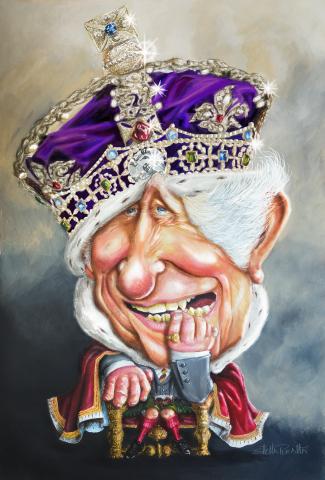
Ray Charles... Stella Peralta
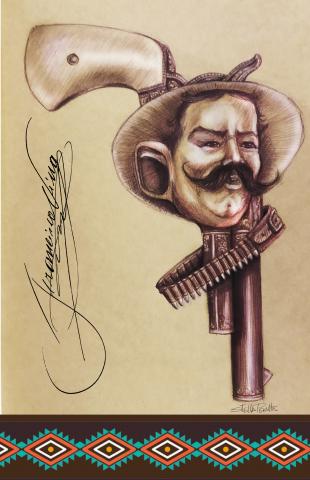
Pancho Pistolas... Stella Peralta
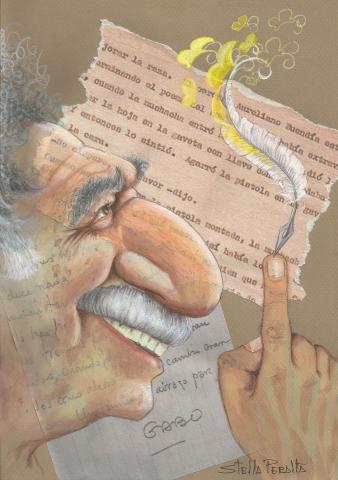
Gabo Entre líneas... Stella Peralta
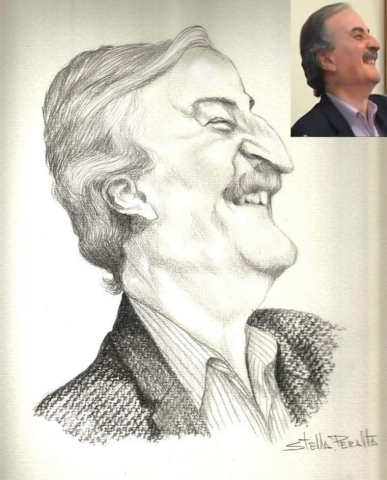
Augusto Amador... Stella Peralta
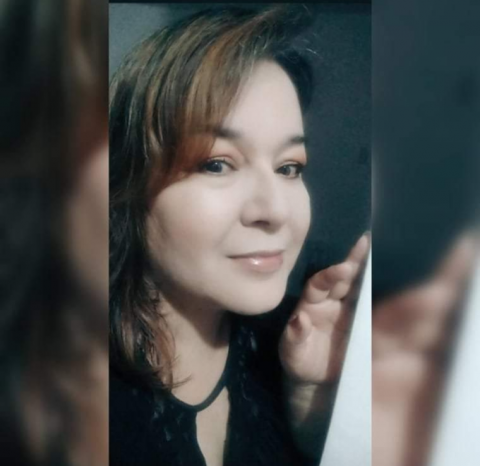
Stella Peralta
Interview with Stella Peralta.
By Pepe Pelayo
"Humor is fine content of humorous thought"
Stella Peralta is Colombian, but that is not the reason she joins us today. So I must start better: Stella Peralta is a caricaturist, cartoonist, illustrator, painter, she has won international awards with her excellent work. Plenty of reasons to be on this site dedicated to humor.
So, having mentioned those important details of hers, I welcome this great artist to Humor Sapiens.
PP: Stella, it is an honor and a pleasure to speak with you. But I have the impression that I was very stingy with my presentation. For this reason, I ask you, please, to introduce yourself, so that humorsapiens.com followers who do not know you can get an idea of your life and work.
STELLA: Thank you, Pepe, for taking my work and work into account. Well, adding to everything you said above about my career, I want to comment that my professional title is Fashion Designer, which I practiced for more than thirty years. I am married and we have two children, one is twenty-five years old and the youngest is eighteen years old. I have been a teacher of figurines, artistic expression and in recent years I have worked in the training and education part for children, adolescents and young people, teaching caricature workshops, manga illustration, character creation in cooperatives, family compensation funds and educational schools. design and animation in my city Tuluá in Valle del Cauca.
PP: Long and rich career, because it means being a trainer of new talents. But now we do get fully into our “dialogue”… When you start in this career it is normal that you do so with many influences, with little practice, even experimenting with some improvisation, etc. But at this point in your career, so solid, it is different, your work has evolved in terms of quality, without a doubt. However, my question is: have you realized that you have also evolved in form and content?
STELLA: Definitely, I have noticed it in my daily practice, both in the sketch exercise, conception of the idea and obviously in my mental and intellectual processes. In recent years, I think I have repeated it a lot in conversations, interviews and my own writings, that this digital era has given us a bonus of ease at all levels to generate concepts, works, techniques and opportunities.
PP: Without a doubt, there is a greater range of possibilities with technology, although they say that on the other hand it brutalizes us. I'm glad it works well for you. Now, of all the modalities that you master (cartoon, illustration, etc.), which is your favorite? Please don't tell me all of them. But if so, think deeply about which one, even a little, satisfies you the most.
STELLA: My favorite is the physiognomic caricature, it gives me the opportunity to delve into the depth and ephemerality of the gesture, the being, the environment and thus I amalgamate my line.
PP: Very well argued. For me, being good at that modality is something great because of how difficult it is to practice it with high quality... Stella, I met you through your personal caricatures, which I love. About them then: how do you choose your caricatures? And then, what is the process and/or method you practice to capture his soul, more than his physicality?
STELLA: Pepe, this answer is of course linked to the previous one and let me tell you that I generally choose the characters based on my intellectual, social, and artistic concerns. They are those characters who have left a profoundly positive or impactful mark on society (some of them have already had their clay legs broken). I do not have a stipulated order to create the character, sometimes I start with the physical part (looking for visual references) and other times I first inquire about his life and work. I don't make many sketches to get to the final one, since I have already molded it in my mind before. I pay a lot of attention to his gaze (external and internal). And although I would like to make them all smile (because I love people to smile) some characters are very serious, although I invented smiles for a couple of them, they turned out well.
PP: I imagine. But maybe the character is so hyper-serious that it's better to show him without a smile, right? I guess you do it that way, of course. And valuing the smile so much as to make your model laugh seems great to me. I'm going to address the theory a little now (it fascinates me, you should know). Do you consider that personal caricature is within what is known as graphic humor? I ask you because I know of colleagues who say that there is a certain variant of personal caricature that is not made to make smiles and they give examples of some that are almost “playful” portraits, so to speak, that aim to pay homage to the caricatured person. And they call it a caricature, because, although it is a portrait (without exaggerations), they place the body very small, for example. However, there are other colleagues who say that every caricature is a parody of a model (a person in this case) and that implies the intention of producing smiles. As you see it?
STELLA: Well, everyone is right. As I also have my own version of the topic. Graphic humor is everything that carries the intention of smiling, of message, of moving conscience, and even of moving masses for or against... But for me the personal caricature or physiognomic caricature is and should be a piece of art that It has a different language of solace, of visual and cultural and intellectual impact that we should take advantage of. I have been exhibiting my caricatures in the midst of conventional art for several years and well there have been comments of all kinds, mostly positive. It is a cultural issue that it is not seen as aesthetically acceptable in these museum or gallery spaces, considering it a minor art. Pepe, but it has been my perception for many years and I don't know if I'm wrong, that the recently deceased painter Fernando Botero told us something about the aforementioned.
PP: I don't know what to tell you, dear. I am one of those who think that drawing a person in the form of a caricature is done with the aim of making them laugh or smile, as a parody that it is. Another thing is that even “the victim” has that smile, because it is clear that the caricature is not to mock, criticize, satirize, but rather it is a simple game. And that it is a minor art, impossible to believe. Even those of us who believe that personal caricature is within the universe of humor, think that it is a form of visual arts like any other, be it painting, sculpture, engraving, etc. But still no one has the absolute truth and as you say, perhaps we are all right. The important thing is that we continue theorizing, right? And to theorize further: what does humor mean to you?
STELLA: For me it is fine content of humorous thought, that fine line between what is funny and what is highly cultured or cultural. This is also where wonderful word games come in that create tremendously creative forms. The rest for me are “jokes” “charades” “chascarrillos”.
PP: Very good. But again I think something different. For me, a joke is humor, a clown's fall is humor, a play on words and a caricature is also humor, etc., etc., because the quality of humor is not given by the quality of that humor. My definition of humor is “the expression of the comic.” And if it just makes us laugh, great and if it also makes us laugh and think at the same time, great too. In short, we can spend hours analyzing the topic, which is why I think it is very important to theorize. There is nothing defined yet in this field and therefore we are all right in what we think, right? Well, to continue on this, what is your definition of graphic humor?
STELLA: Pepe, I think I got ahead of myself in one of the previous questions, I'll try to complement it anyway. Without a doubt, before a smile, it is awareness, it is freedom of expression, it is opinion, graphic humor is so important in society as a cultural and educational ingredient, not only in school and academia but from home. They are those small graphic pieces that move history, that dislodge minds and generate social changes, as I said before, whether for or against... It is like the catalyst for the “mistakes” of history and those of us who make it.
PP: I agree. But only with a nuance to go deeper. I completely agree with everything you say about the importance of graphic humor. However, I would not say “it is before a smile… Because for me it is always a smile and the smile cannot be separated from that value that we give to graphic humor. What's more, I think that if there were no smile, the message that you and I say, which graphic humor produces, would not be effective. Humor is more effective than seriousness in messages. It arrives more, it penetrates more, it changes more. But I love that we debate all of this. Thank you. And now I shift more towards the “messages”, the contents… For example, I have to ask you a fashionable question: are there limits to humor?
STELLA: In my conception there should be, humor should be to build, to compensate, to amend, to educate, inform, raise awareness, unite, to grow as a society and not the opposite. Although one of its functions bases its lines and sociolect on “freedom of expression,” there should be a filter of respect for the beliefs and philosophies of the “other.”
PP: Of course there should be unrestricted respect for what others think and not disrespect, attack, much less offend and humiliate others with our humor. The problem, for me, is who decides what is an offense and what is not? Since the matter is so subjective, I prefer that freedom of expression prevails and that human and civilized laws decide it. That's why I agree that anyone who feels disrespected with a joke, for example, sues the comedian. But I want the comedian to also have the right to make whatever joke he wants. I confess that I reject with all my might that acidic, burlesque, offensive, aggressive, humiliating humor. I have never done it nor will I do it. I will never consume it. But that doesn't give me the right to ban humor that I don't like or don't do. I hope, as you say, a filter is invented where we all leave satisfied. Disgusting topic, right? We better change... For example, can you tell a funny, witty or curious anecdote that you have experienced in your career in graphic humor?
STELLA: Yes, I have a curious and let's say satisfactory one. And it is an assignment they gave me for the Commissioner of the city of Newark in New Jersey, USA. According to his acquaintances and on his social networks, the very serious gentleman did not even crack a smile, always very serious and poised, with his typical diplomatic behavior, like a good politician. Well, as I previously told you, for me it is very important that people smile or see them smile, it is pleasant. So this character became a challenge for me and I dedicated myself to searching, searching, scrutinizing information and videos about him on the web, I don't know how many sites I visited, the truth is that in a short video on their networks, they were giving him recognition for his work and in a spontaneous gesture with something funny that the presenter of the event said, he released what for me is pure gold: “a smile”, which I never laughed at. And well, the rest were graphite strokes on paper by Commissioner Augusto Amador. Ahh! and the gratifying thing was that when I handed it to him he smiled again as a sign of approval.
PP: Great, Stella! Nice anecdote. And looking out your window: how do you see graphic humor, especially caricature (whether personal, editorial or general) today and how do you see it in the future?
STELLA: Worldwide, there is great participation in personal caricature, those independent voices are growing. With respect to editorial graphic humor, I see that it is in decline, both worldwide and in my country. Virtual terrorism has become a daily occurrence and that has given rise to silence on several issues. In my opinion, the future, at the editorial level, is not very promising. (Life prevails) Unlike the personal and independent HG, I see a great future for him due to his divorce from politically tainted media.
PP: You're right, I agree with you. Although the problem of paying for publishing on the Internet must be solved, right? That would help a lot... Hey, would you like to do something in humor that you haven't done before?
STELLA: Yes, Pepe, for several years it has crossed my mind and projects to contribute not a grain of sand, but “a humorous stroke” (as I call my graphic creations), whether in a printed medium or a virtual one. With characters who have contributed, or are contributing, positive things to society in any area. And in these crucial moments in history where women are being recognized as essential contributors to historical changes, I also project those women in my lines in a full color book. I await proposals.
PP: Well, let's hope that the necessary support arrives. I hope that dream comes true for you very soon. And to close, do you wish that I had asked you a question and I didn't? And if so, can you answer it now?
STELLA: Pepe, the interview was great and I have told some things that no one knows, especially if it had been ideal not as a gender issue, but as a historical issue, the role that women have had in the history of cartoons, obviously what it would be like. At a global level, it is difficult for me to answer. But I can give you an insight into the topic at the Colombian level. In 2019 I wrote an essay on the topic, titled “FROM ANONYMITY TO PAPER.” It was presented within the framework of the “International Meeting of Women Cartoonists”, which was convened by the Bank of the Republic and the Museum of Modern Arts of Barranquilla. The essay is about the trajectory, some history, its position regarding humor and how the cultural, religious and endocrine environment act directly on the “sense of humor” of women, as well as men.
PP: Perfect. I'll look for it. I congratulate you then on that essay. And I finish with this: could you say a few words to our humorsapiens.com followers?
STELLA: As a good caricaturist say that: “A smile also moves mountains, dry souls, and if that smile is in strokes, it moves consciences, and can move the entire world.” So a smile is better than an arrow.
PP: Well, friend and colleague, I thank you infinitely for your time and your effort to achieve this “dialogue”, which I enjoyed very much. I wish you good health and may your successes not stop. A hug.
(This text has been translated into English by Google Translate)

